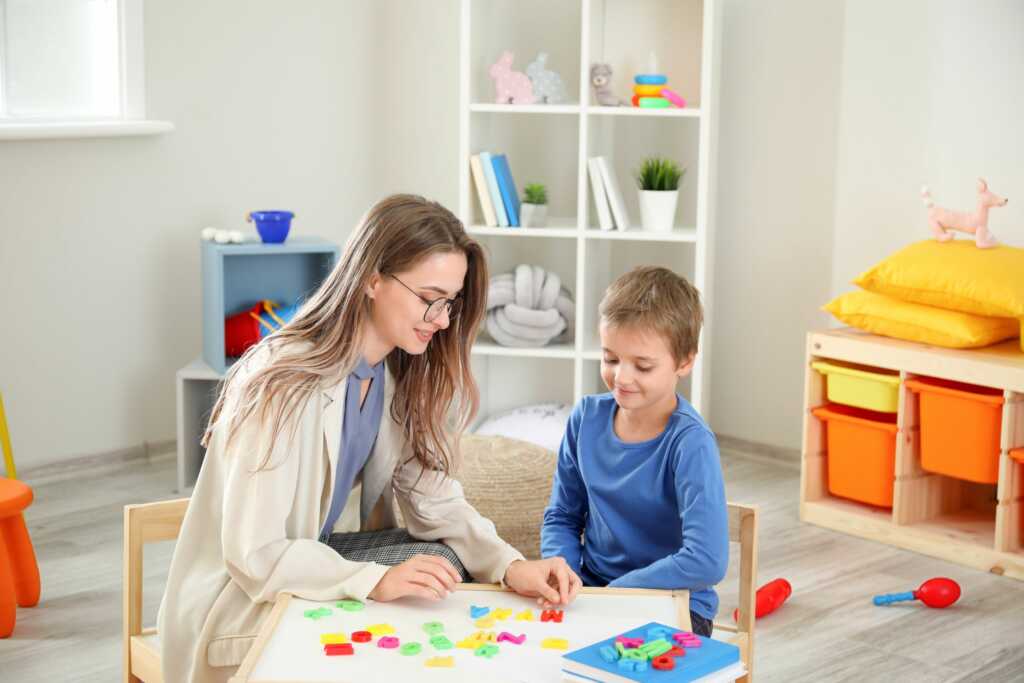Blog

How Speech Therapy Supports Children with Autism Spectrum Disorder
If your child has been diagnosed with autism, speech therapy stands out as one of the most impactful interventions, addressing communication challenges that affect nearly every aspect of daily life. At Therapy and Wellness Connection, our Brecksville speech therapy team has witnessed countless breakthroughs as children with autism develop their unique voice and connect more meaningfully with the world around them. Let’s explore how speech therapy can make a transformative difference for your child.
Understanding Communication Challenges in Autism
Children with autism spectrum disorder experience communication differently. Some may be nonverbal or minimally verbal, while others speak fluently but struggle with the social nuances of conversation. Common challenges include:
- Expressive Language Difficulties: Your child might know what they want to say but struggle to find the right words or form complete sentences. They may use echolalia, repeating phrases they’ve heard rather than generating original language.
- Receptive Language Barriers: Understanding what others are saying can be particularly challenging. Your child might take language very literally, missing implied meanings or struggling to follow multi-step directions.
- Social Communication Issues: The unwritten rules of conversation—taking turns, maintaining eye contact, understanding tone of voice, and reading body language—often don’t come naturally to children with autism.
- Pragmatic Language Struggles: Starting conversations, staying on topic, adjusting communication style for different listeners, and understanding humor or sarcasm can all present obstacles.
The good news? Our Brecksville speech therapy services are specifically designed to address these challenges with evidence-based strategies tailored to each child’s unique needs.
How Speech Therapy Makes a Difference
Speech-language pathologists (SLPs) who specialize in autism use a comprehensive approach that goes far beyond simply teaching words. Here’s what quality speech therapy for children with ASD looks like:
Building Functional Communication
The primary goal isn’t just speech—it’s meaningful communication. Our speech therapists work to help your child express their needs, wants, thoughts, and feelings in whatever way works best for them. This might include:
- Developing verbal speech skills through targeted articulation and language exercises
- Implementing augmentative and alternative communication (AAC) devices or picture exchange systems for nonverbal children
- Teaching sign language or gestures as a bridge to verbal communication
- Using visual supports to enhance understanding and expression
Every child deserves a way to communicate, and our Brecksville speech therapy team ensures each child finds their voice, whether through words, technology, or other means.
Enhancing Social Communication Skills
Children with autism often want to connect with others but need explicit instruction in social communication. Our speech therapists teach:
- Initiating and maintaining conversations with peers
- Understanding and using appropriate greetings and farewells
- Recognizing and responding to social cues like facial expressions and body language
- Taking conversational turns and staying on topic
- Adjusting communication style based on the listener and situation
These skills open doors to friendships, classroom participation, and community involvement.
Improving Receptive Language
Understanding others is just as important as expressing yourself. Our Brecksville speech therapy team helps children:
- Follow increasingly complex directions
- Understand abstract language concepts
- Interpret figurative language, idioms, and humor
- Comprehend stories and answer questions about what they’ve heard
- Distinguish between literal and implied meanings
Strengthening receptive language reduces frustration and helps children succeed in school and social settings.

Developing Pragmatic Language Skills
The “hidden curriculum” of social interaction is systematically taught through:
- Role-playing different social scenarios
- Video modeling to demonstrate appropriate interactions
- Social stories that explain social expectations
- Peer interaction groups where children practice skills in real-time
- Direct instruction in reading social contexts and responding appropriately
Evidence-Based Approaches Used in Brecksville Speech Therapy
At Therapy and Wellness Connection, we use play-based, research-backed methodologies proven effective for children with autism:
- Applied Behavior Analysis (ABA) Principles: Many speech therapy interventions incorporate ABA techniques, using positive reinforcement to shape communication behaviors and break down complex skills into manageable steps.
- PECS (Picture Exchange Communication System): This evidence-based approach teaches children to communicate using pictures, often serving as a foundation for developing speech.
- Social Thinking Methodology: This framework helps children understand their own thoughts and the thoughts of others, improving perspective-taking and social problem-solving.
- DIR/Floortime: This play-based approach follows the child’s lead, building communication through natural, engaging interactions.
- Visual Supports: Visual schedules, choice boards, and communication boards reduce anxiety and support language comprehension.
- Naturalistic Developmental Behavioral Interventions (NDBI): These strategies embed learning opportunities within natural play and daily routines, making therapy functional and generalizable.
Individualized: No Two Children Are Alike
One of the most important aspects of effective autism speech therapy is individualization. During your initial evaluation at our Brecksville speech therapy clinic, we conduct comprehensive assessments to understand:
- Your child’s current communication abilities and challenges
- Their sensory preferences and sensitivities
- Their interests and motivations
- Their learning style
- Your family’s priorities and goals
This information shapes a completely customized treatment plan. A child who loves trains might work on requesting skills using train toys, while another fascinated by music might practice taking turns during musical activities. We meet your child where they are and build from there.
Starting Early Makes a Difference
While children can benefit from speech therapy at any age, early intervention is particularly powerful. The brain’s neuroplasticity is greatest during early childhood, making it an optimal time for developing communication skills.
If you notice any of these signs in your young child, consider seeking an evaluation:
- Limited or no babbling by 12 months
- No single words by 16 months
- No two-word phrases by 24 months
- Loss of previously acquired language skills
- Limited eye contact or response to their name
- Repetitive language or unusual vocal patterns
- Difficulty with back-and-forth communication
However, remember that it’s never too late to start. Older children and adolescents continue to make meaningful progress in speech therapy, developing skills that support academic success, employment, and independent living.
Collaborative Care: A Multidisciplinary Advantage
At Therapy and Wellness Connection, our multidisciplinary approach means your child’s speech therapist collaborates with occupational therapists, physical therapists, and other specialists under one roof. This integration is especially beneficial for children with autism, who often need support across multiple developmental areas.
For example, if sensory sensitivities are affecting your child’s ability to participate in speech therapy, our occupational therapist might provide strategies to increase comfort and focus. If motor planning difficulties impact speech production, physical therapy exercises might support oral-motor development.
This coordinated care ensures everyone is working toward complementary goals, maximizing your child’s progress and minimizing the stress of managing multiple providers at different locations.
Taking the First Step
If you’re considering speech therapy for your child with autism, we understand you might have questions or concerns. Starting any new therapy can feel overwhelming, especially when you’re already navigating the complexities of an autism diagnosis.
Our Brecksville speech therapy team is here to support you every step of the way. We believe in:
- Compassionate Care: We see and value your child’s unique strengths and personality.
- Transparent Communication: You’ll always understand what we’re working on and why.
- Evidence-Based Practice: Our methods are grounded in research and proven results.
- Family-Centered Approach: Your input, concerns, and goals drive our treatment plans.
- Celebration of Progress: Every milestone, no matter how small, deserves recognition.
Every child with autism has something to say. Some will speak in sentences, others through pictures or devices, and some through gestures and expressions. What matters is that they have a way to share their thoughts, needs, and wonderful perspectives with the world.
Speech therapy provides the tools, strategies, and support to make communication possible and meaningful. At Therapy and Wellness Connection, our experienced Brecksville speech therapy team is committed to helping your child find their voice and use it confidently.
If you’re ready to explore how speech therapy can support your child with autism spectrum disorder, we invite you to reach out. Together, we can create a personalized plan that honors your child’s uniqueness and unlocks their communication potential.
Your child has so much to share—let’s help the world hear it.
Therapy & Wellness Connection – your connection to a life without limitations – provides speech therapy to children in Akron, Cleveland, Brecksville-Broadview Heights and surrounding communities. We also offer summer camp, day programs, education services, vocational counseling and more. Call us at (330) 748-4807 or send us an email.
Additional Resources:
Autism (Autism Spectrum Disorder), American Speech-Language-Hearing Association
More Blog Entries:
